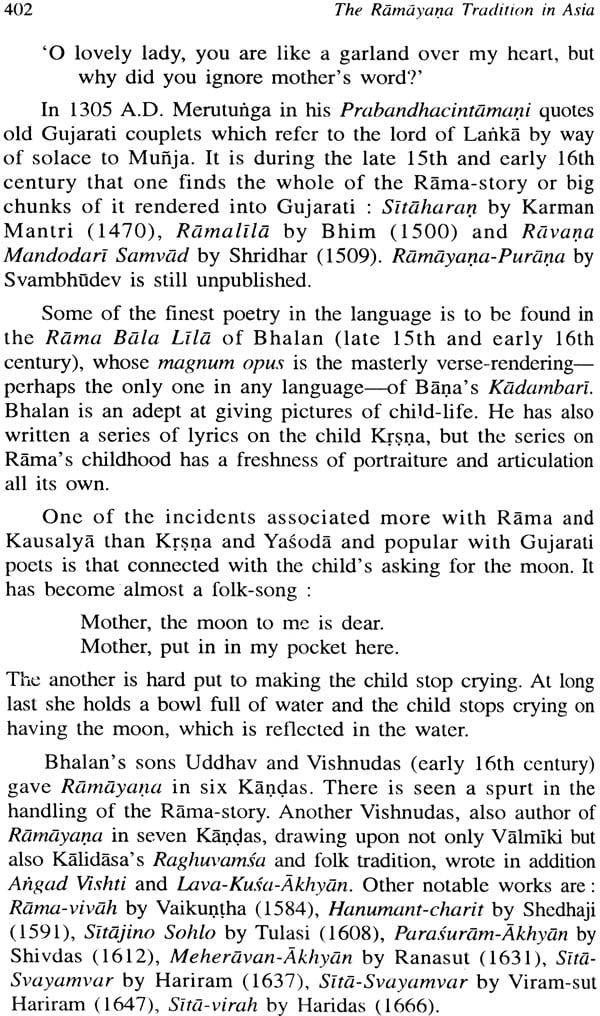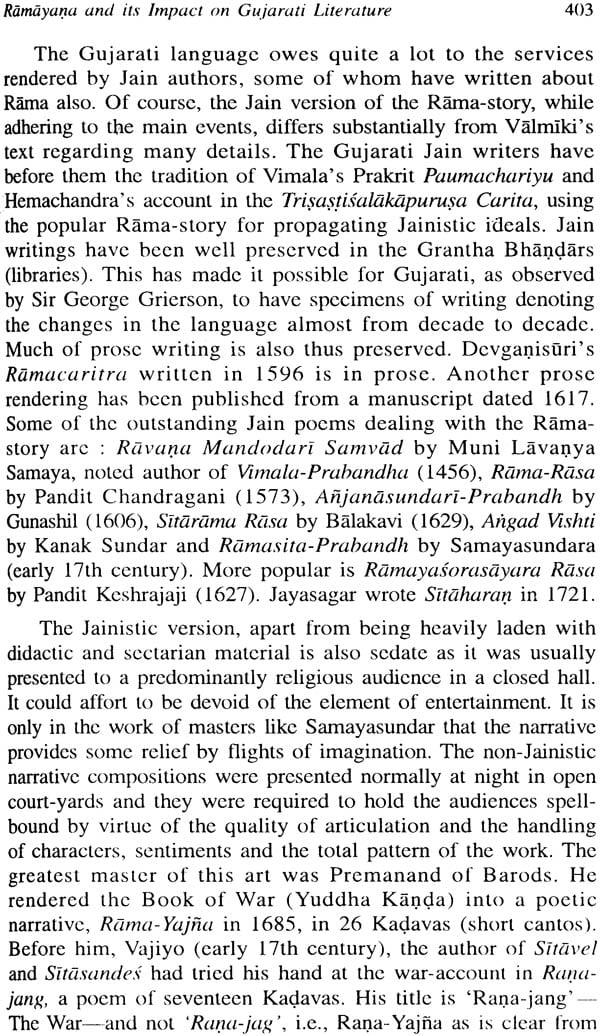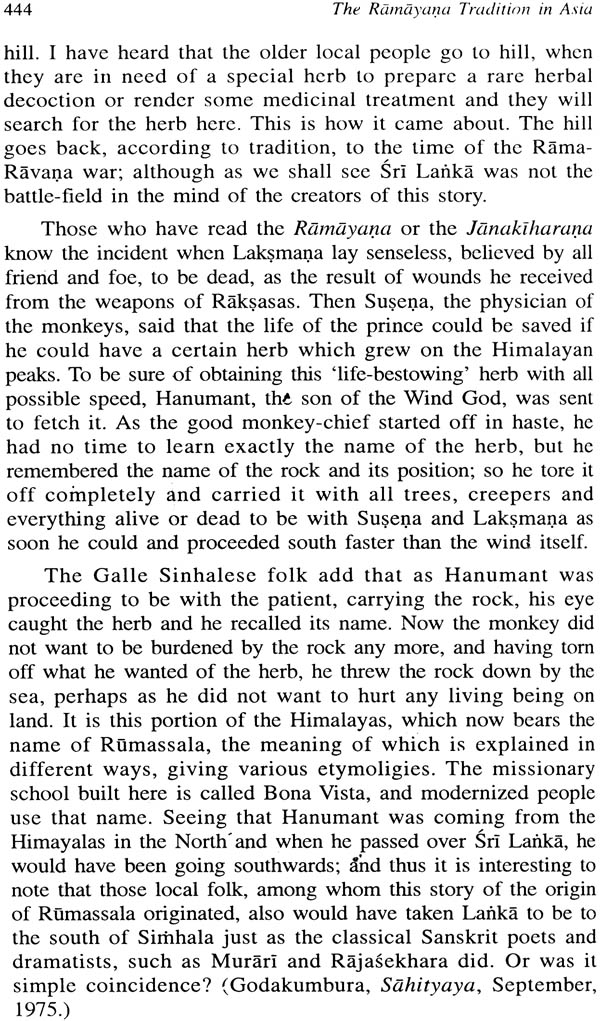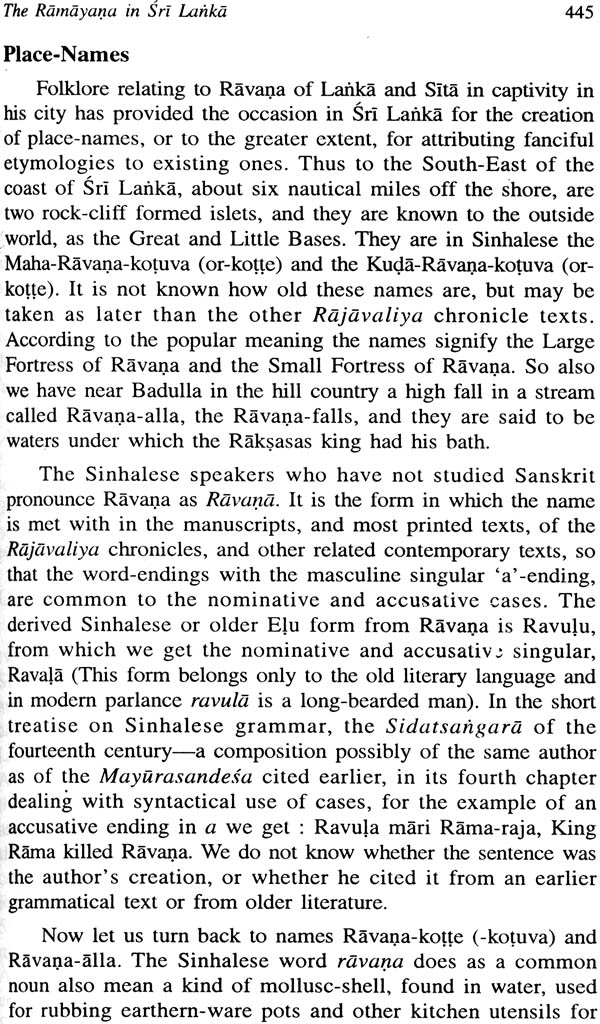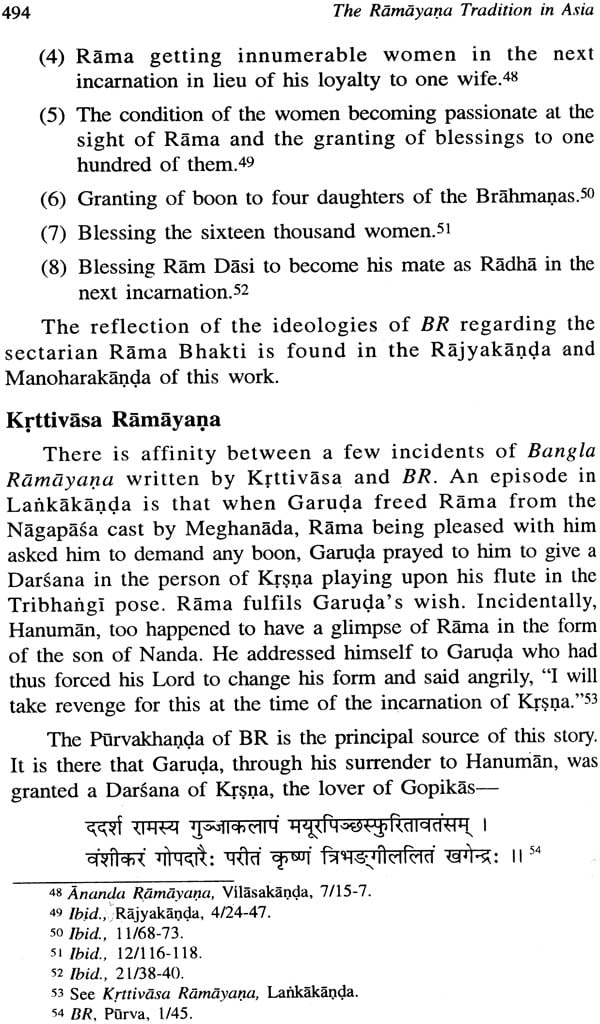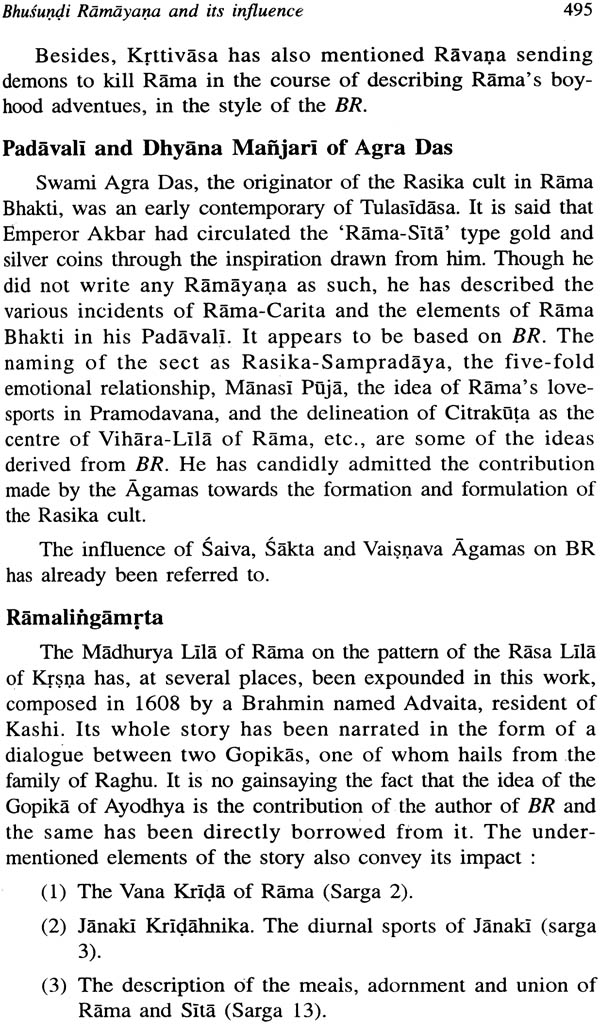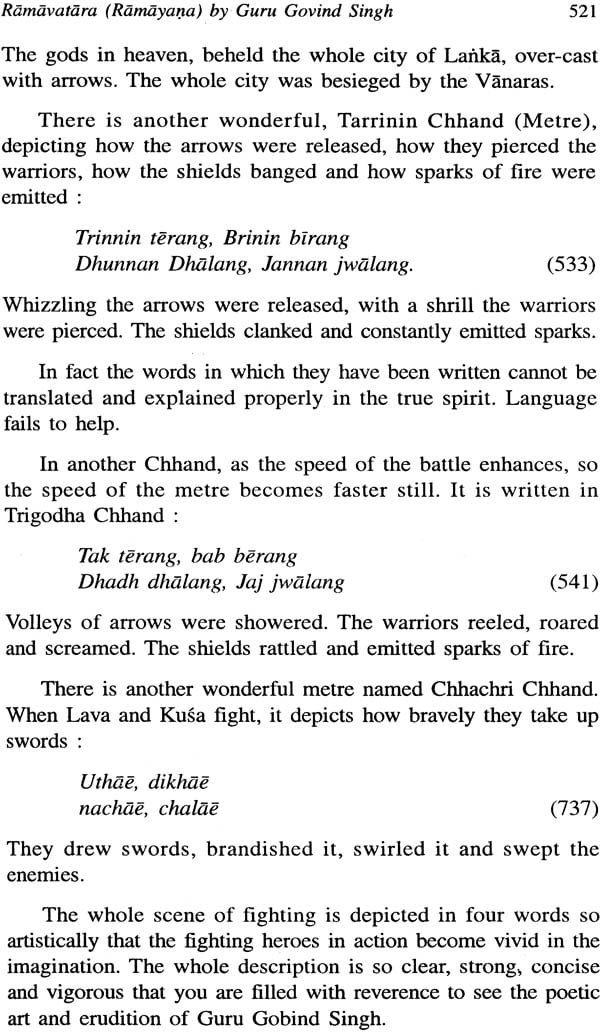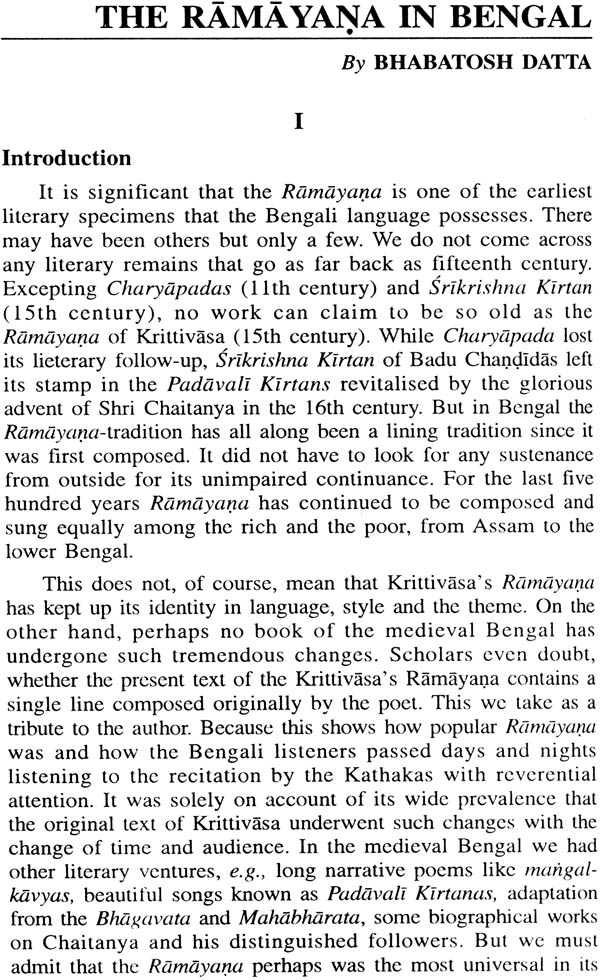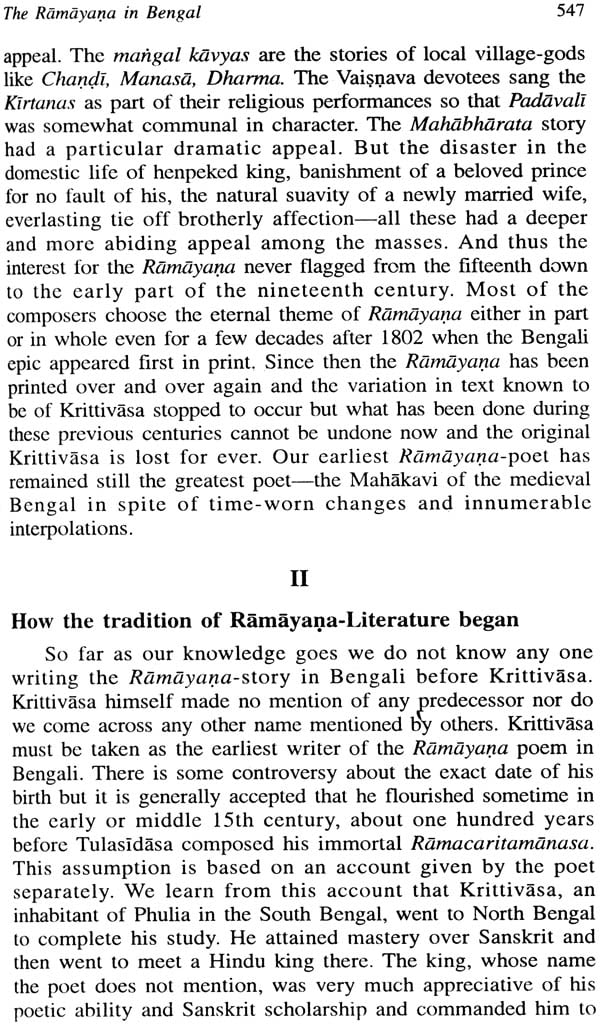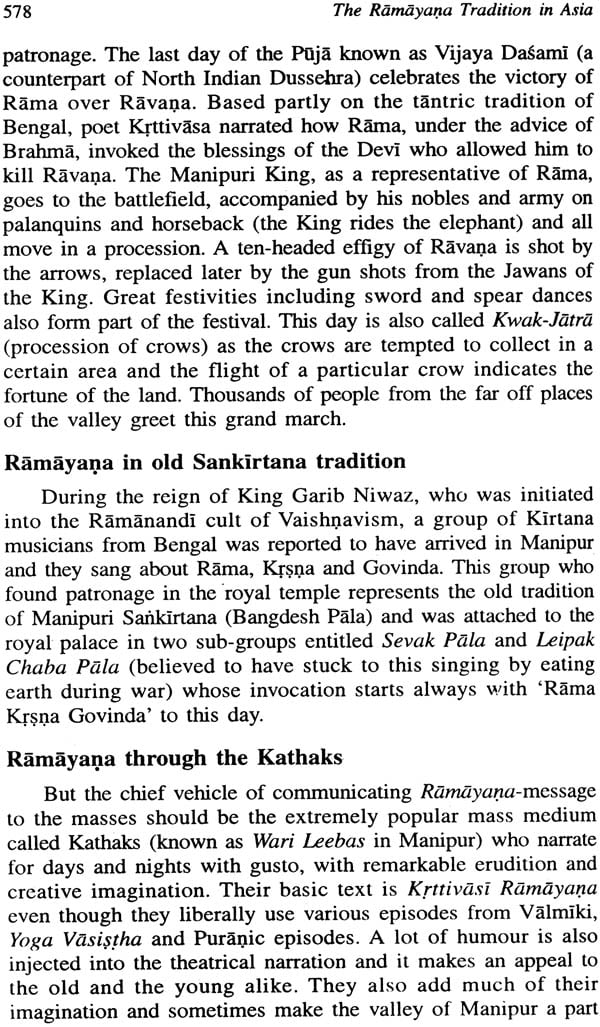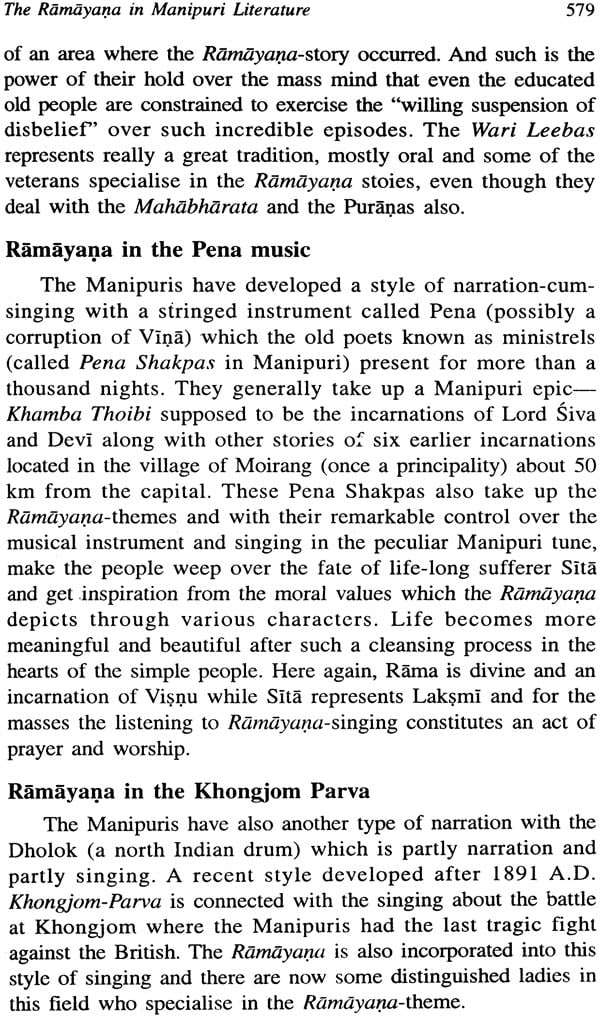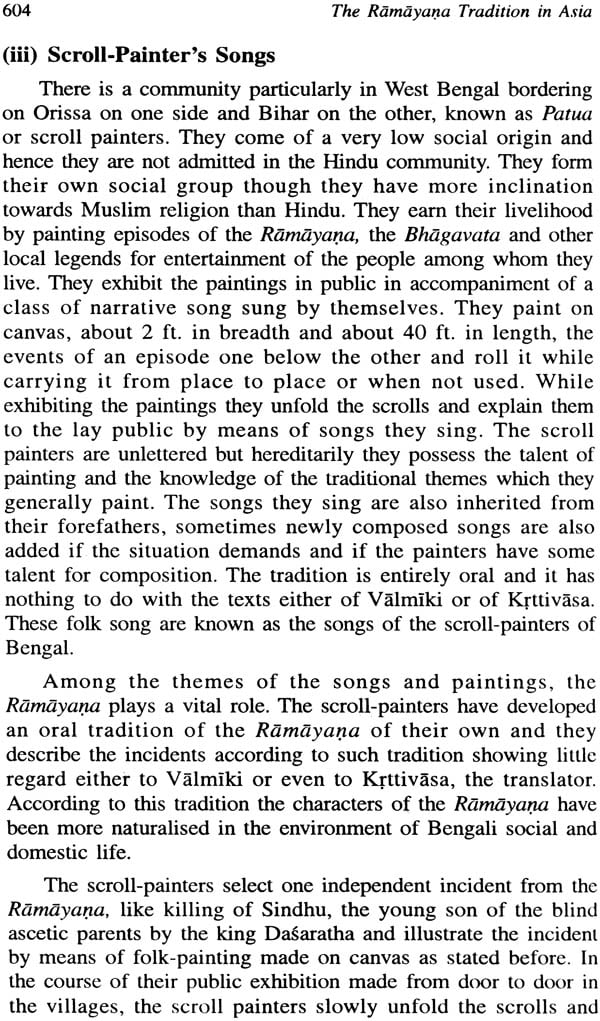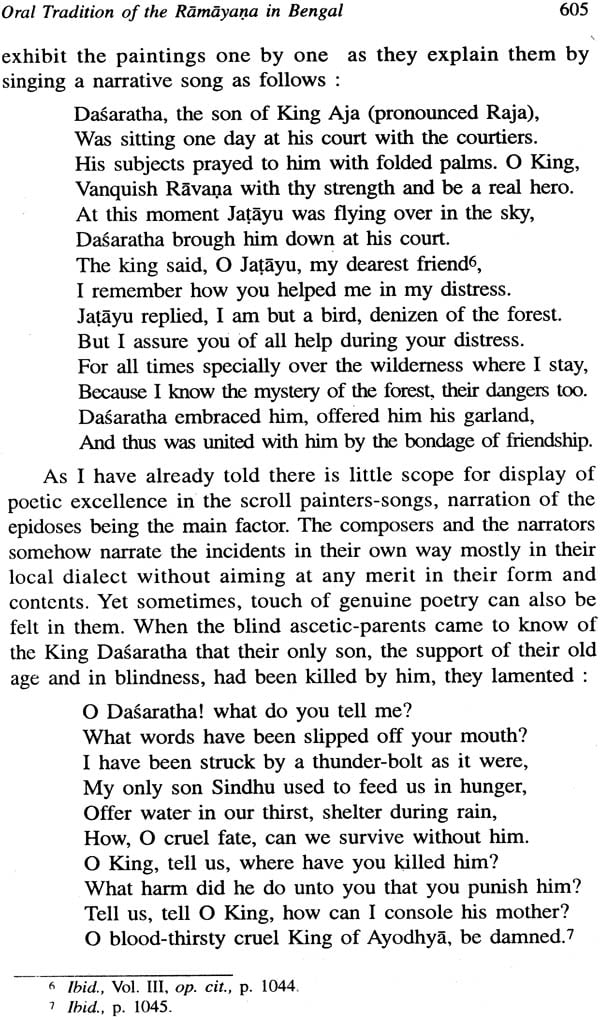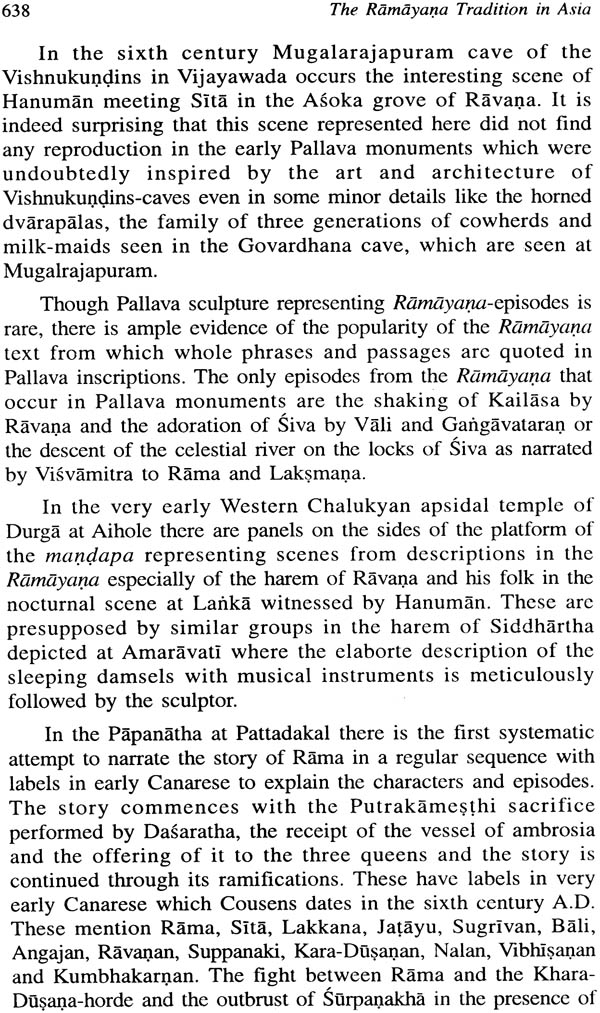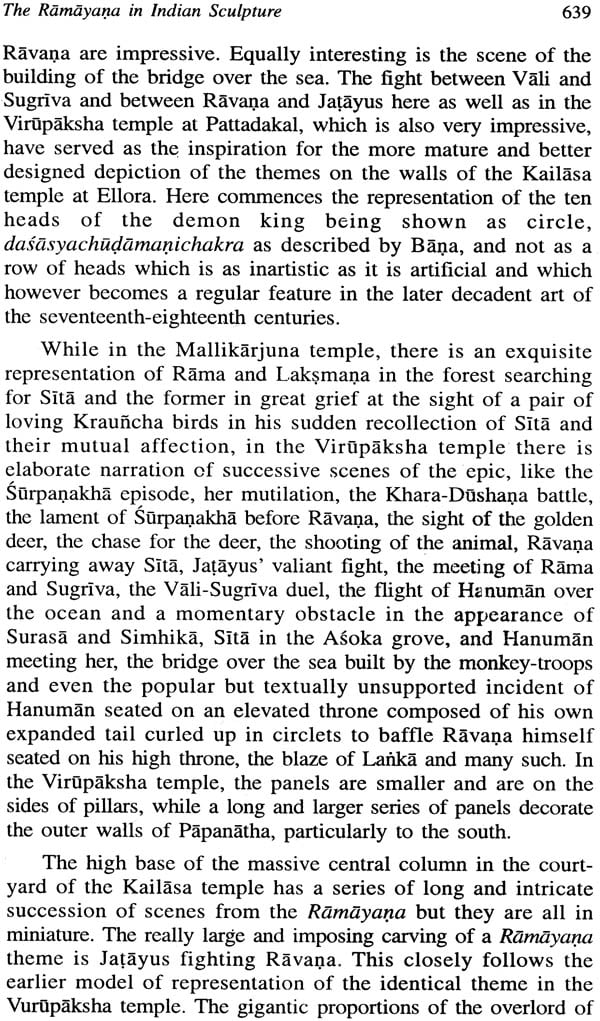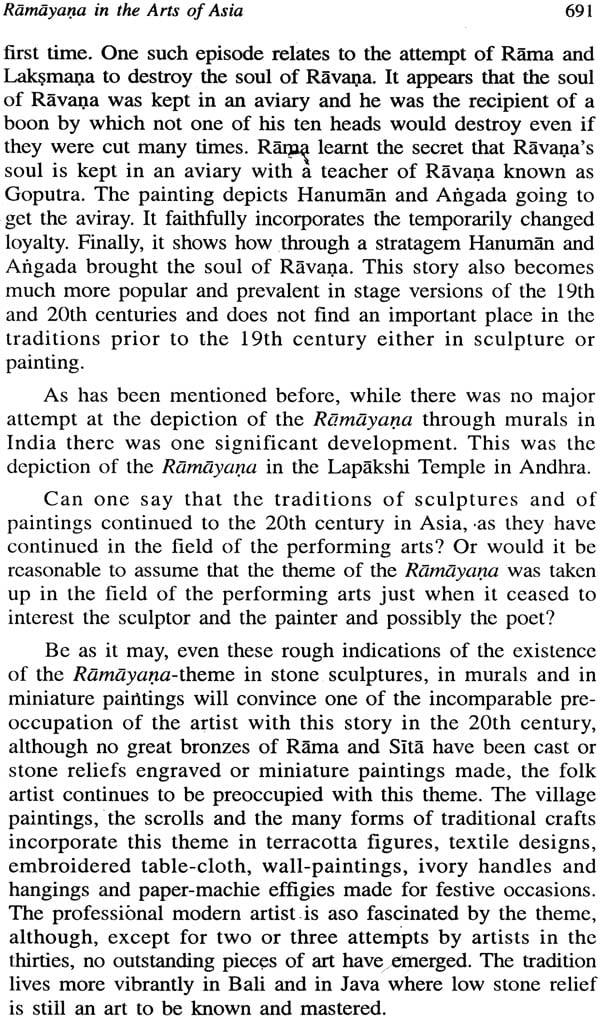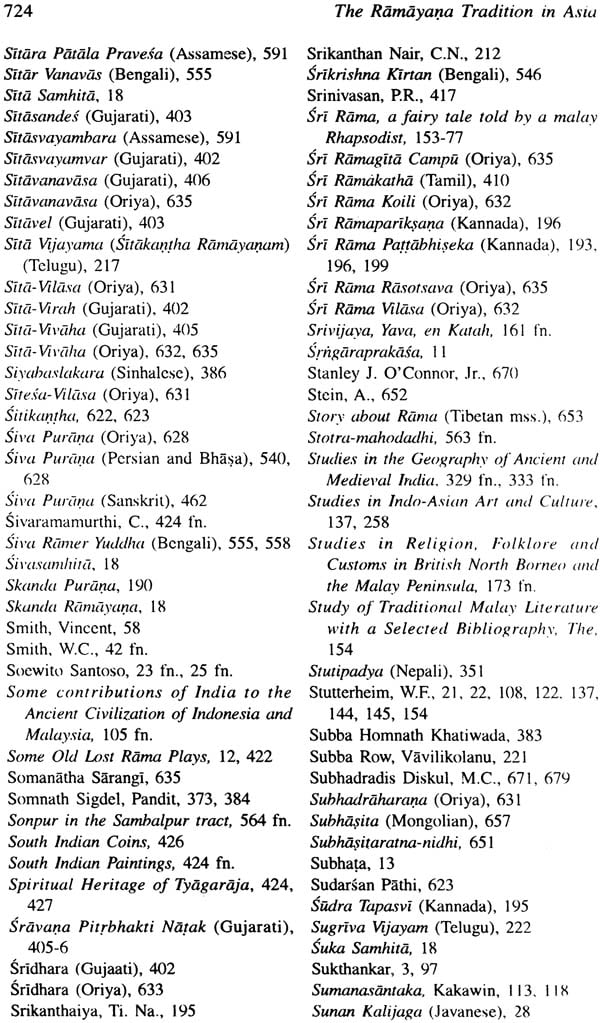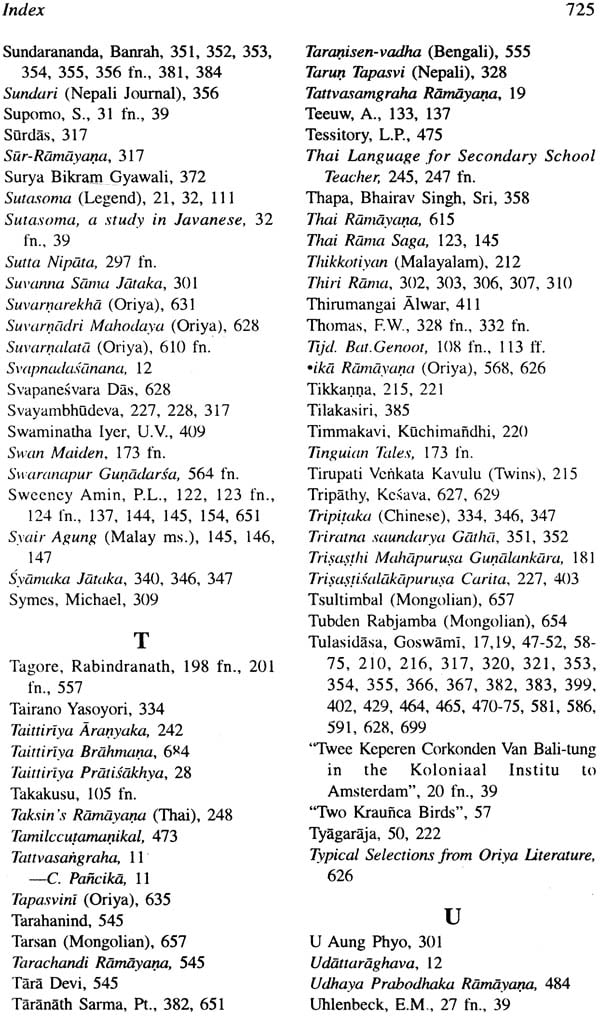
The Ramayana Tradition in Asia
Book Specification
| Item Code: | IDE379 |
| Author: | Ed. By. V. Raghavan |
| Publisher: | SAHITYA AKADEMI, DELHI |
| Language: | English |
| Edition: | 2017 |
| ISBN: | 9788126027361 |
| Pages: | 743 |
| Cover: | Hardcover |
| Other Details | 8.8" X 6.0" |
| Weight | 1.05 kg |
Book Description
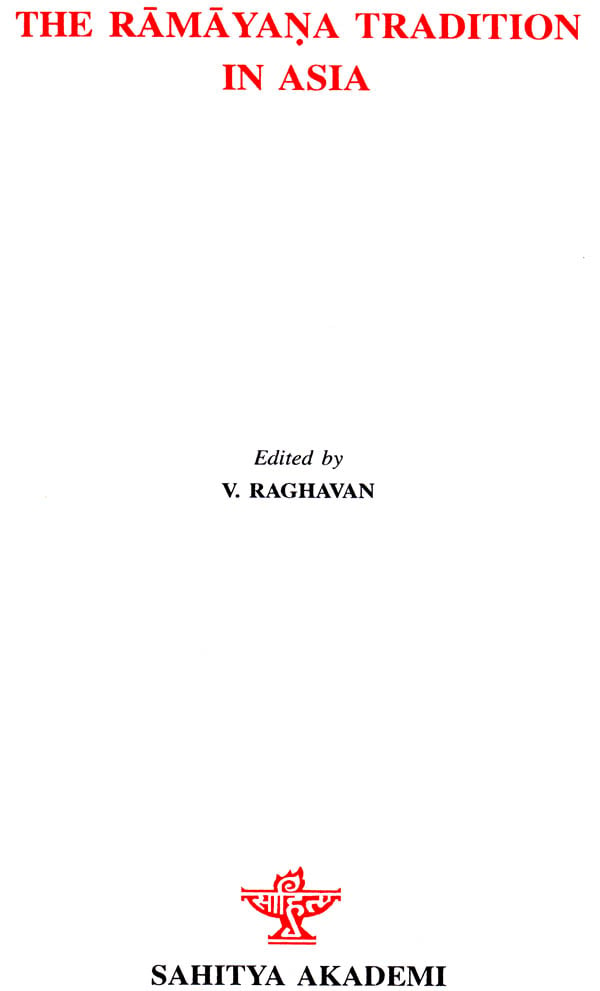
From the Jacket:
The Ramayana is one of the germinal sources linking the different cultures of the Indian subcontinent and also the various nations of Asia. The story of Rama has pervaded deep into almost all regions, faiths and languages of Asia, influencing not only the literature but also the social customs and cultural development of many nationalities of Asia. Sahitya Akademi therefore considered it befitting to organize an international Ramayana Seminar in 1975 at New Delhi, which proved to be culturally and intellectually rewarding exercise with the participation of over forty scholars from 11 countries, each an authority on the Ramayana lore in his language and region.
The late Dr. V. Raghavan, who was the moving spirit behind this Seminar ever since it was envisaged as a joint venture of the Government of India and Sahitya Akademi (National Academy of Letters), also helped in putting these Seminar papers together for publication.
Sahitya Akademi is happy to offer this unique publication for the benefit of both the laymen and the scholars interested in Asian culture in general and the Ramayana Tradition in particular.
Sahitya Akademi is the National Academy of Letters set up by the Government of India in 1954.It is an autonomous body whose policies are laid down by a General Council which consists of representatives of the various Indian Languages, States and Universities.
The Akademi's programme is directed to fostering and coordinating literary activities in the Indian languages and to making good literature written in any Indian Language available in translation to readers in all other languages of the country.
Akademi publications are mainly in Indian languages. Its publication programme in the English language is generally limited to supplying basic information about Indian writers and their works.
The Akademi has also actively cooperated with UNESCO in the implementation of UNESCO'S major project of Mutual Appreciation of Eastern and Western Cultural values and has also maintained contact with several literary and cultural institutions in foreign countries to encourage better appreciation of Indian Literature abroad. The Akademi has got prepared for UNESCO several publications of abiding literary interest.
If a poem has contributed substantially to keeping a culture alive amongst vast masses of people through ages, it is certainly the epic Ramayana. Rama, the hero, a likeable, pleasing godman, later came to be liked upon as a human god, more especially with the Vedic gods receding into the background. In fact, 'Rama' became a byword, with religious and spiritual, mantra-like overtones amongst the illiterate populace, even as OM was amongst those well-versed in scriptures.
The Poet's attempt at presenting the grammar of human relationships, as it emerges from the royal houses of Ayodhya, Kiskindha and Lanka, had not a little to do with immense popularity of the Ramayana. There is a subtle magnetism also in the ultimate fate of Sita, perhaps of women in general, as described in the last book, which , though, like the first one, not of the Epic when Kalidasa wrote his Raghuvamsha and was indeed a very moving part of the story when Bhavabhuti selected it as the theme for his masterpiece Uttara-rama-charita. The eternal war against evil, the lesson (if a poem must have a lesson) urging one 'to behave as Rama and not as Ravana' has a universal appeal which cuts across religions and endears the work to votaries of various faiths in India as well as in the neighbouring countries, where the Ramayana remains a significant part of their cultural heritage.
In recent times, outstanding scholars, both in the West as well as in the East, have conducted in-depth studies of the many problems connected with the sprawling Ramayana tradition. Attempts at tracing the origin of the main incidents of the narrative in actual history, folk-tales, legend or myth have been made again and again. The interaction between and the synthesis of the Brahminical, Buddhistic and Jain Ramayana tradition form another subject of study. The additions and alterations made by oral reciters, folk theatre artistes, painters and sculptors not only in India but in the countries of the South-East Asia as well have also claimed the attention of many a scholar. The problem of the relative antiquity of the main events and the writing of the two epic-the Ramayana and the Mahabharata – has been carefully looked into. The questions of the poetic diction and the use of the metres in the Ramayana have been discussed. And there is a continuing interest in assessing the various poetic renderings of the Ramayana story in modern Indian languages vis-a-vis the work of Valmiki. A whole Ramayana lore has grown.
The present volume of papers, presented at the International Ramayana Seminar hosted by the Sahitya Akademi at New Delhi in 1975, is one more proof of how much still remains unexplored and deserves the close scrutiny of discerning scholars. It is gratifying to note that Ramayana scholarship in South-East Asian countries has already made a rich contribution to the Ramayana lore.
The Sahitya Akademi has recently undertaken an ambitious project of compiling a critical inventory of Ramayana Studies in the world-"Inventaire raisonne des Etudes du Ramayana"-which has been adopted by the Union Academique Internationale. I am sure this work, which involves collaboration of various countries, will be, when completed, a very important research tool for the Ramayana students all over the world.
It is unfortunate that Dr. V. Raghavan, the renowned Indologist and Ramayana Scholar, who presided over the International Seminar and edited the text of this volume passed away on Ramanavami day, 1979 and could not live to see it published.
It is hoped this volume will prove a worthy addition to Ramayana Studies.
| Preface | v | |
| Programme of the Seminar | xi | |
| 1. | The Ramayana in Sanskrit Literature by V. Raghavan | 1 |
| 2. | The Old Javanese Ramayana, its composer and Composition by Soewito Santoso | 20 |
| 3. | The Role of the Sacred Book in Religion - The Ramayana by Harry H. Buck | 40 |
| 4. | Ramacaritamanasa and its Relevance to Modern Age by C. Bulcke | 58 |
| 5. | Validity of the Ramayana Values by Sukumari Bhattacharji | 76 |
| 6. | Ramayana Manuscripts of Different Version by U.P. Shah | 93 |
| 7. | The Migration of the Ramayana Story to Indonesia And Some Problems connected with the Structure And Contents of the Old Javanese Ramayana By Himansu Bhusan Sarkar | 103 |
| 8. | The Malaysian Ramayana in Performance by Amin Sweeny | 122 |
| 9. | Ramayana in Malaysia by Ismail Hussein | 142 |
| 10. | The Ramayana in the Philippines by Juan R. Francisco | 155 |
| 11. | The Ramayana Tradition in Kannada by V. Sitaramiah | 178 |
| 12. | Ramayana in Malayalam literature and Folk-Lore By N.V. Krishna Warrior | 204 |
| 13. | Ramayana in Telugu Literature and Folk-Lore By C.R. Sarma | 215 |
| 14. | Jain Ramayanas and Their Source by V.M. Kulkarni | 226 |
| 15. | The Ramayana - Its Character, Genesis, History, Expansion and Exodus by Suniti Kumar Chatterji | 242 |
| 16. | Ramayana in That Theatre by Chamlong Sarapadnuke | 245 |
| 17. | The Ramayana in Laos (Vientiane Version) by Kamala Ratnam | 256 |
| 18. | The Khvay Thuaraphi by Sachidanand Sahai | 282 |
| 19. | Ramayana in Burmese Literature and arts by U. Thein Han And U. Khin Zaw | 301 |
| 20. | Re-Creations of the Ramayana in Tamil and Hindu by Shankar Raju Naidu | 315 |
| 21. | Ramyana in Inscriptions by D.C. Sircar | 322 |
| 22. | Textual Theme of Ramayana in Japan by Prof. Minoru Hara | 334 |
| 23. | Ramyana in Nepali by Kamala Sankrityayan | 348 |
| 24. | Ramayana in Sinhala Literature and its Folk Version by J. Tilakasiri | 385 |
| 25. | The Ramayana and its impact on Gujarati Literature By Prof. Umashankar Joshi | 397 |
| 26. | Sri Ramayana in Tamilnadu in Art, Thought and Literature by R. Nagaswami | 409 |
| 27. | Ramayana in Srilanka and Lanka of the Ramayana - by C.E.Godakumbura | 430 |
| 28. | Tulsi-Dasa's Ramacaritamanasa in Hindi and its Relationship to the Sanskrit version of Valmiki, The Tamil Version of Kamban, and the Thai Version of King Rama I by S. Singaravelu | 455 |
| 29. | Bhusundi Ramayana and its Influence on the Medieval Ramayana Literature by Bhagwati Prasad Singh | 475 |
| 30. | Ramcharitamanasa and the performing Tradition Of Ramayana by Induja Awasthi | 505 |
| 31. | Ramavatara (Ramayana) By Guru Govind Singh by Baljit Tulsi | 517 |
| 32. | Ramayana in Kashmir Literature and Folk-Lore by P.N. Pushp | 534 |
| 33. | The Ramayana in Bengal by Bhabatosh Datta | 546 |
| 34. | Rama-Literrature in Orissa and its Influence on Indonesia by K.C. Sahoo | 561 |
| 35. | Ramayana in Manipuri Literature and Folk-lore by E. Nilakanta Singh | 537 |
| 36. | Ramayana in Assamese Literature by Biswanarayan Shastri | 583 |
| 37. | Oral Tradition of the Ramayana in Bengal by Asutosh Bhattacharya | 593 |
| 38. | Ramayana in Oriya Literature and Oral Tradition By Nilamani Mishra | 617 |
| 39. | The Ramayana in Indian Sculpture by C. Sivaramamurti | 636 |
| 40. | Ramayana, the Epic of Asia by Lokesh Chandra | 648 |
| 41. | Ramayana in Mongolia by T.S. Damdinsuren | 653 |
| 42. | The Ramayana Tradition and the Performing arts by Suresh Awasthi | 660 |
| 43. | Ramayana in Sculpture and Paintings in Thailand By M.C. Subhadradis Diskul | 670 |
| 44. | Ramayana in the Arts of Asia by Kapila Vatsyayan | 689 |
| List of Participants | 703 | |
| Index | 707 |
